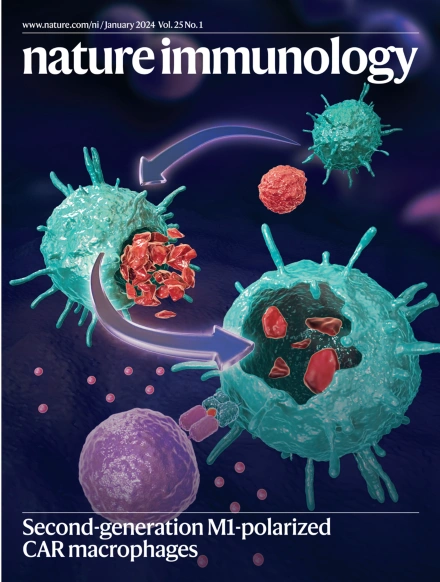Restoring balanced HSC youth
IF 27.6
1区 医学
Q1 IMMUNOLOGY
引用次数: 0
恢复平衡的HSC青春
老年人造血干细胞(hsc)的再生潜力功能减弱,并倾向于髓细胞输出,淋巴细胞和红细胞生成减少。在Nature Aging中,Sun等人研究了衰老hsc中扭曲骨髓生成的细胞内在机制。比较年轻小鼠和老年小鼠造血干细胞之间的转录差异,作者确定了随后在老年Cas9小鼠造血干细胞中被crispr介导的突变靶向的候选基因。该筛选确定了Cd38和Clu(编码簇蛋白),后者被证明是老年hsc中骨髓生成偏倚的关键驱动因素。聚簇蛋白的缺失导致淋巴-髓细胞输出更加平衡,并增加了长期重建潜力。从机制上讲,胞质聚集蛋白与线粒体蛋白TOM20和MFN2相关,导致线粒体低灌注增加以及线粒体自噬减少。Clu或Cd38的高表达导致衰老hsc线粒体过度氧化磷酸化和活性氧(ROS)产生,DNA损伤增加,p38 MAPK通路激活。簇蛋白依赖性的mito-ROS和磷酸化的p-p38的增加增加了转录因子CEBPB的表达和活性,导致衰老HSC后代细胞的骨髓偏向谱系分化。原参考文献:Nat. Aging https://doi.org/10.1038/s43587-025-00908-z (2025)
本文章由计算机程序翻译,如有差异,请以英文原文为准。
求助全文
约1分钟内获得全文
求助全文
来源期刊

Nature Immunology
医学-免疫学
CiteScore
40.00
自引率
2.30%
发文量
248
审稿时长
4-8 weeks
期刊介绍:
Nature Immunology is a monthly journal that publishes the highest quality research in all areas of immunology. The editorial decisions are made by a team of full-time professional editors. The journal prioritizes work that provides translational and/or fundamental insight into the workings of the immune system. It covers a wide range of topics including innate immunity and inflammation, development, immune receptors, signaling and apoptosis, antigen presentation, gene regulation and recombination, cellular and systemic immunity, vaccines, immune tolerance, autoimmunity, tumor immunology, and microbial immunopathology. In addition to publishing significant original research, Nature Immunology also includes comments, News and Views, research highlights, matters arising from readers, and reviews of the literature. The journal serves as a major conduit of top-quality information for the immunology community.
 求助内容:
求助内容: 应助结果提醒方式:
应助结果提醒方式:


